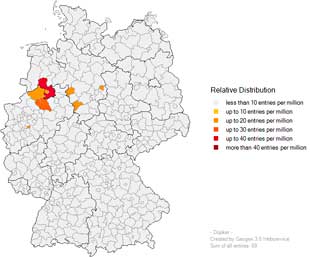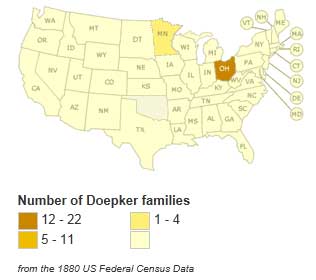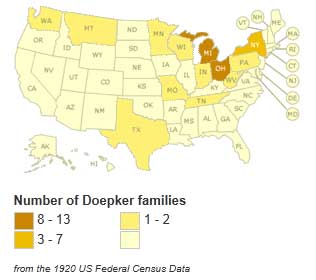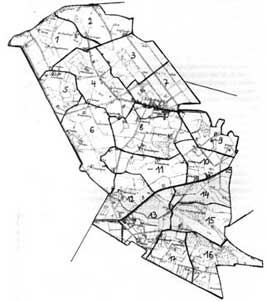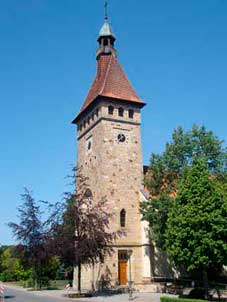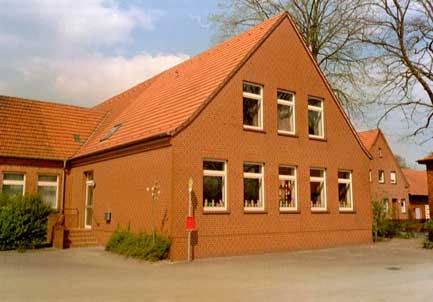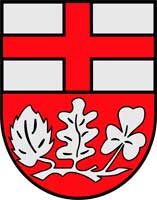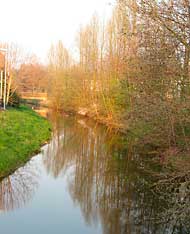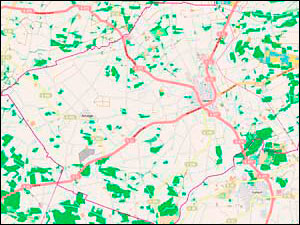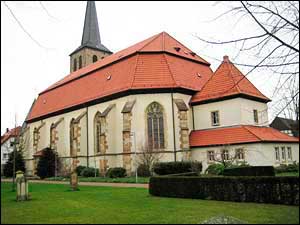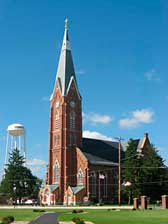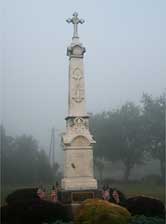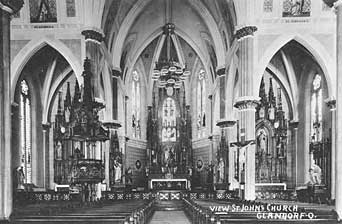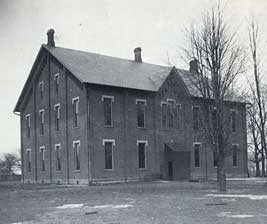Thomas Leo Gorman and Hildegarde Doepker
Doepker Demographics
The Doepker Surname
The History of Schwege, Germany
About Glandorf, Germany
About Glandorf, Ohio
| The Doepker Surname | ||||||||
|---|---|---|---|---|---|---|---|---|
The use of surnames started in Germany around the eleventh or twelfth century. Prior to that, people would have been referred to simply by their given name and nothing else. Given names were generally three syllables, comprised of a double root term plus one of a number of suffixes. The root(s) could refer to an individual's identifying characteristic, a feature of the land they lived in, or of their or their family's role or status within the community. Often times, both roots might mean the same thing, or two aspects of the same thing. The suffix acted as a modifier for the root terms to indicate the person's relationship to the root identifier. For example, the "er" suffix could mean "owner" (of some geographical feature described by the root) or "doer" (if the root described an occupation). The "en" suffix meant "at" or "to" (a location). "Ing" meant "belonging to" (as a family). As the population of Germany grew, these given names came to be used as surnames in succeeding generations. They were used as a means of associate groups of individuals with the families to which they belonged. (source: German Surnames - Their Meaning and Origin by Karl Mesloh). In the case of our family, the surname "Doepker" is an Anglicization of the German "Döpker" (pronounced sort of like "dee-oop-ker"). The name has a number of variations depending upon which part of Germany you're in. Others are "Depke", "Döpke", "Döpfer", and "Döpner", but the all have the same origin, genealogically speaking. There are two possible meanings that have been put forth as the source of "Doepker":
In Germany, the highest concentration of families using the surname of "Döpker" are in the District of Osnabrück (where Schwege, our ancestral homeland, is located), with an occurrence of between 30 and 40 per million (see table below). The variants "Depke" and "Dopfer" are equally common, though more widely distributed. A much more common spelling is "Döpke", whose members are concentrated in the districts just east of Osnabrück. Much less common is "Döpner", which are almost entirely concentrated in the district of Dingolfing-Landau.
|
| The History of Schwege, Germany | |||
|---|---|---|---|
The village of Schwege is the birthplace of the earliest known Doepkers. It lies about two kilometers off Highway 51 halfway between the cities of Osnabrück and Münster, straddling Hauptstraße ("Main Road") K341 just west of Glandorf. It was incorporated into its own municipality in 1971, along with a number of neighboring communities, and again in 1981 into the municipality of Glandorf. This area of Germany is relatively flat and sparsely forested with good soil and crisscrossed with numerous streams. In short, excellent farm country, as it was when our ancestors worked this land. It lies in the center of the municipality of Glandorfer-Schwege (see map at right). The name comes from Swaiga, which is the Old German term for a large cattle pasture or stockyard. In 2012, it had a population of about 1052 permanent residents. The first written reference to Schwege is from Catholic tithing documents dated A.D. 1234. Most other documents relative to the area prior to 1550 are held at St. John the Baptist Church in Glandorf, address primarily issues of tithing and land sales, and only rarely refer to the area by name. Due to its close proximity to Münster, in 1252 Schwege was traded to the country of Westphalia by the Bishop of Osnabrück as a means to pay off its debts, It later reverted to the dominion of Osnabrück and Hannover in an agreement whose objective was to quell feuds between some local nobles. The area around Schwege was occupied by Swedish forces during the Thirty Years War, from 1631 to 1648. Their departure in 1648 precipitated a period of recovery until, beginning in 1719, a number of epidemics swept the area. In the intervening years up to 1731, diseases like cholera, influenza and smallpox targeted primarily the very young and the very old. It is not known precisely how many individuals and families were affected, but they were considerable. In 1803, the area was once again occupied by foreign forces, this time by troops of the French Army under Napoleon, who demanded a War Tax of the local populace. When the French were driven out in 1813, Schwege, along with the rest of the Bishopric of Osnabrück, was once again incorporated into the Kingdom of Hanover. The years that followed were ones of hardship for the peasantry and many began looking abroad for opportunities to rid themselves once and for all of this burden. During medieval times, land was utilized in a communal fashion, but through the many years of war and upheaval, by the early 19th century, nearly all land had transferred or been granted to either the local nobility or the church. Many farmers became tenants on land that previously had been the purview of the community. An additional municipal tax, passed in the early 19th century, assessed the size of the tax based on the size of one's fireplace. It assured that those living in meager circumstances would most surely remain that way for generations. The first schoolhouse in Schwege was erected as a result of the passage of compulsory education legislation in 1786. It was a small (16 by 18 feet), one-room building built the same year. Situated in a rather swampy area of town and was constituting 100 and 130 pupils at a time, it was not ideal. However, it was far superior to the previous system where school was paid for entirely out of a family's pockets, leaving many of the community's children undereducated. That building functioned serviceably until 1817, when a new and larger school was erected, along with a residence for the teacher, in a less soggy area of town. That school, which accommodated as many as 177 students, remained until 1896, when the core of the current Schwege Grundschule (Schwege Primary School) was built. It received electric lighting in 1927 and was expanded in 1950, 1964, 1984, 1989 and 2010.
|
| About Glandorf, Germany | ||||
|---|---|---|---|---|
The municipality of Glandorf lies in the southernmost part of the District of Osnabrück in the State (or Bundesland) of Niedersachsen (Lower Saxony), Germany. At the time our ancestors left the area, it was part of the country of Hanover, which largely occupied the geography of today's Niedersachsen. It is the location of St. John the Baptist Catholic Church (see below), of which the Döpkers were members. The name Glandorf is of Celtic origin and comes from Glanathorpe, meaning "settlement on the river Glane". Glanus Glanos was the Celtic god of water and the Old Germanic adjective "glane" means bright, shiny or flashing. Glandorf was first mentioned by name in historical records in 1070. During the Thirty Years War, it was occupied by Swedish troops following the Battle of Breitenfeld in 1631. On May 5, 1636, when the town's populace could not pay the war tax exacted by their occupiers, the village was set on fire and a number of its citizens put to death, including one by crucifixion. Glandorf was incorporated under the Diocese of Osnabrück until 1807 when, under Napoleonic rule, it was declared a part of the Kingdom of Westphalia. In 1814, following Napoleon's defeat, it reverted to the Kingdom of Hanover. Historically, Glandorf has been a largely Catholic community. Today, Glandorf has a population of about 6700, out of which approximately 2900 declare themselves as Catholic and 400 as Protestant, a proportion that has remained approximately consistent for generations. As a result, the upper half of the city's coat of arms uses the colors of the Catholic Diocese of Osnabrück and shows the flag of Saint John the Baptist, a centered red cross on a white or silver field. On the lower half is displayed a branch sprouting leaves of the lime, oak and shamrock. Each is emblematic of the character of the people and showing them together is indicative of the idea that people of different religions or origins can live together in peace. St John The Baptist Church, Glandorf, HanoverAt the time of Johann Henry Döpker's exodus from his home to America, he was a member of St. John the Baptist Catholic Church in Glandorf. The oldest part of the structure was built around 1270. It was a simple building with a single aisle, following a Roman design. In 1500 it was widened to include two naves, following the Gothic style used by many churches of the period. On May 1636, the church was burned down completely by Swedish troops during the Thirty Years War occupation. The event is chronicled in an incised inscriptions over one of the side entrances, over what is generally referred to as the "bride door". Following the war, it was subsequently rebuilt, largely of the materials of the old church. In 1665, the roof collapsed due a storm and was rebuilt with a flat roof. Between 1817 and 1820, the roof was rebuilt again to more closely resemble a classical hall church, with the addition of a two-story gallery on the west side, where the organ console was located. In 1937 the tower was increased to 54 meters. From 1991 to 1992 the church and bell tower were repaired from the outside, including the reconstruction and expansion of the sacristy. The interior of the church was renovated between 1995 and 1996 to its current state.
|
